Abstract
1. Four male monkeys (M. fascicularis) were trained in a movement performance task which involved pulling a horizontal lever into a target zone and then collecting, from one of a variety of positions, a small food reward. The same animals were also trained to sit quietly and accept passive manipulation and natural stimulation of the arm and hand while remaining relaxed. 2. After complete bilateral section of the cuneate fasciculi or division of a major part of these dorsal column afferents at C1-C2 or at C5 level, the animals were still able to perform movement tasks normally. Disturbance of discrimination ability was revealed after vision was occluded it the animal was required to detect differences in texture with only a small cutaneous area in contact with the object (e.g. using only the tip of the index finger). Contactual-placing reactions could be performed in the absence of vision and the movements the animal made in these reactions were well controlled and appropriately directed. Minimal disturbance of contact placing was noticed if the surface touched was on the hand or fingers or if the reaction involved crossed placing. 3. An examination of the natural discharges of 342 percentral neurones revealed that the patterns of activity exhibited in relation to complex movements were indistinguishable from patterns recorded in normal monkeys carrying out similar tasks. 4. Discharges of ninety-one of 321 precentral neurones could be produced by appropriate natural stimuli delivered within the cell's afferent input zone at the periphery. The zone from which a given cell could be influenced was usually limited and its location could be on any part of the contralateral forelimb. However, all but nine of these responses were found in animals in which a small proportion of the cuneate fibres remained intact. In an animal with histologically proven complete section of the cuneate faciculi very few (nine of 171) precentral neurones were influenced by natural activation of peripheral receptors in the forelimb. The zones from which these few afferent inputs were found could all have been proximal to the level of the cuneate lesion. 5. The very small number of responding pre-central neurones found in an animal with complete section of the cuneate fasciculi made it likely that the dorsal columns provide the major pathway for effects from circumscribed peripheral receptors in the forelimb to influence precentral neurones. However, even in an animal with complete interruption of cuneate fibres, a proportion of post-central neurones could still be influenced by natural activation of peripheral receptors within restricted regions of the forelimb. Hence the 'sensory' cortex was still in receipt of afferent projections which could be revealted readily by the tests used. 6...
Full text
PDF
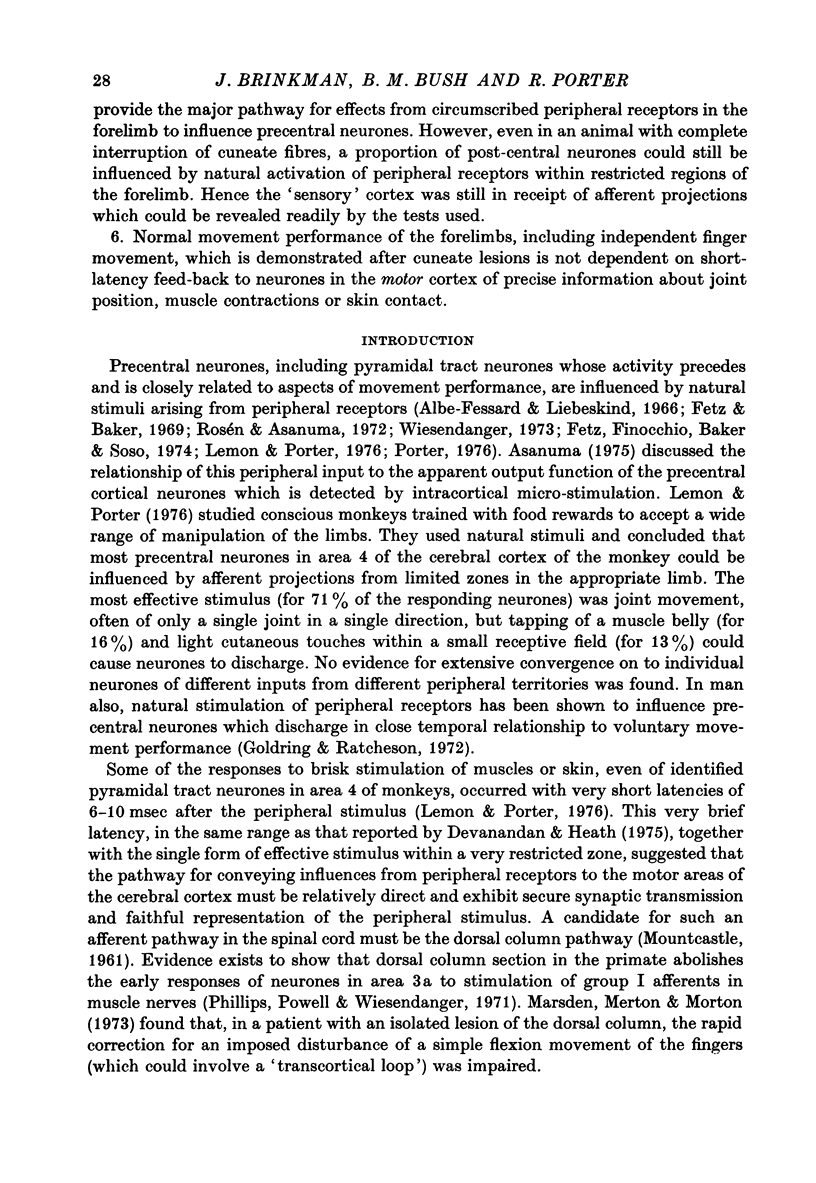


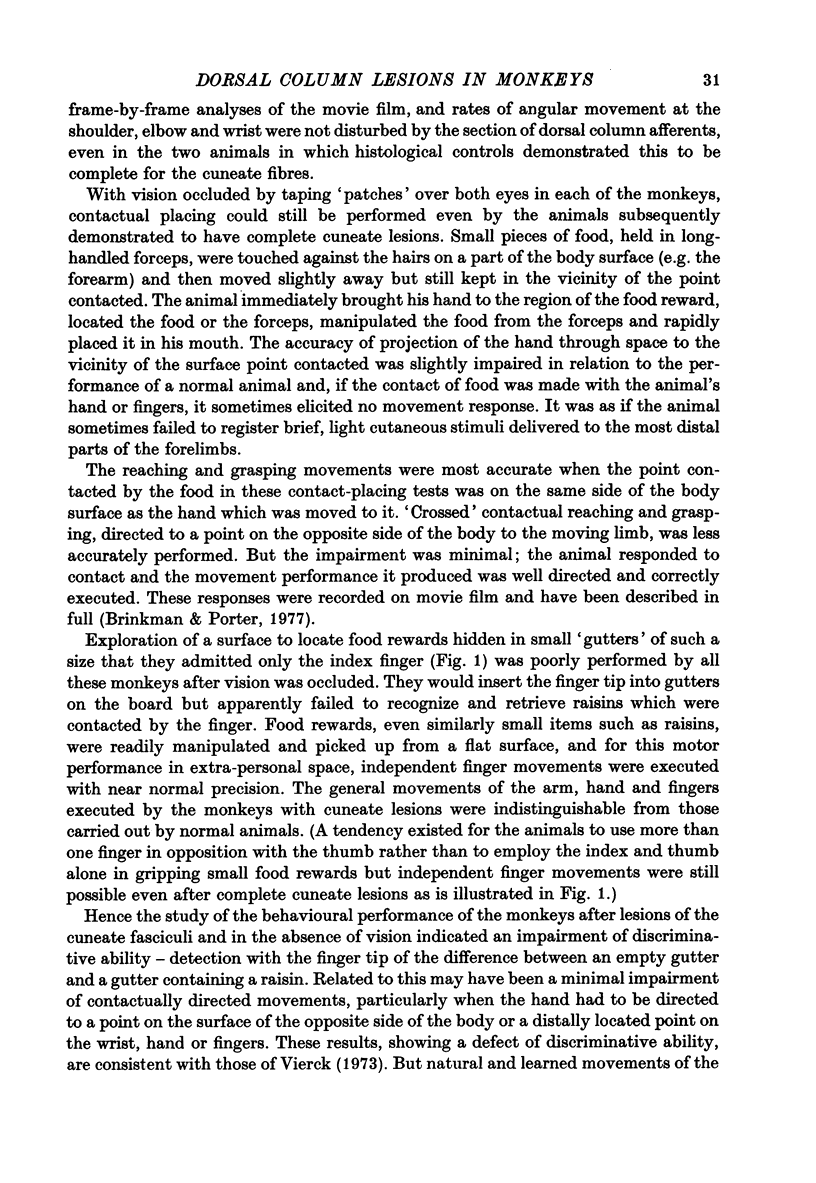

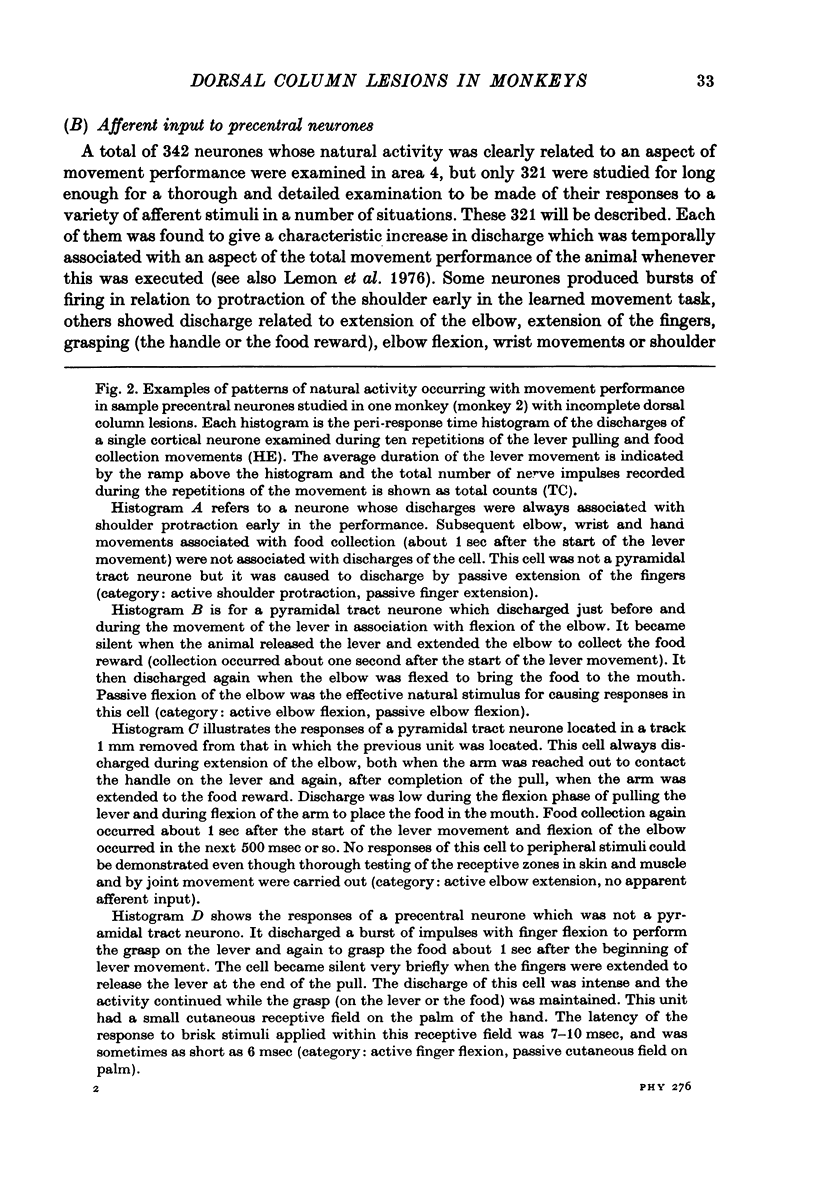

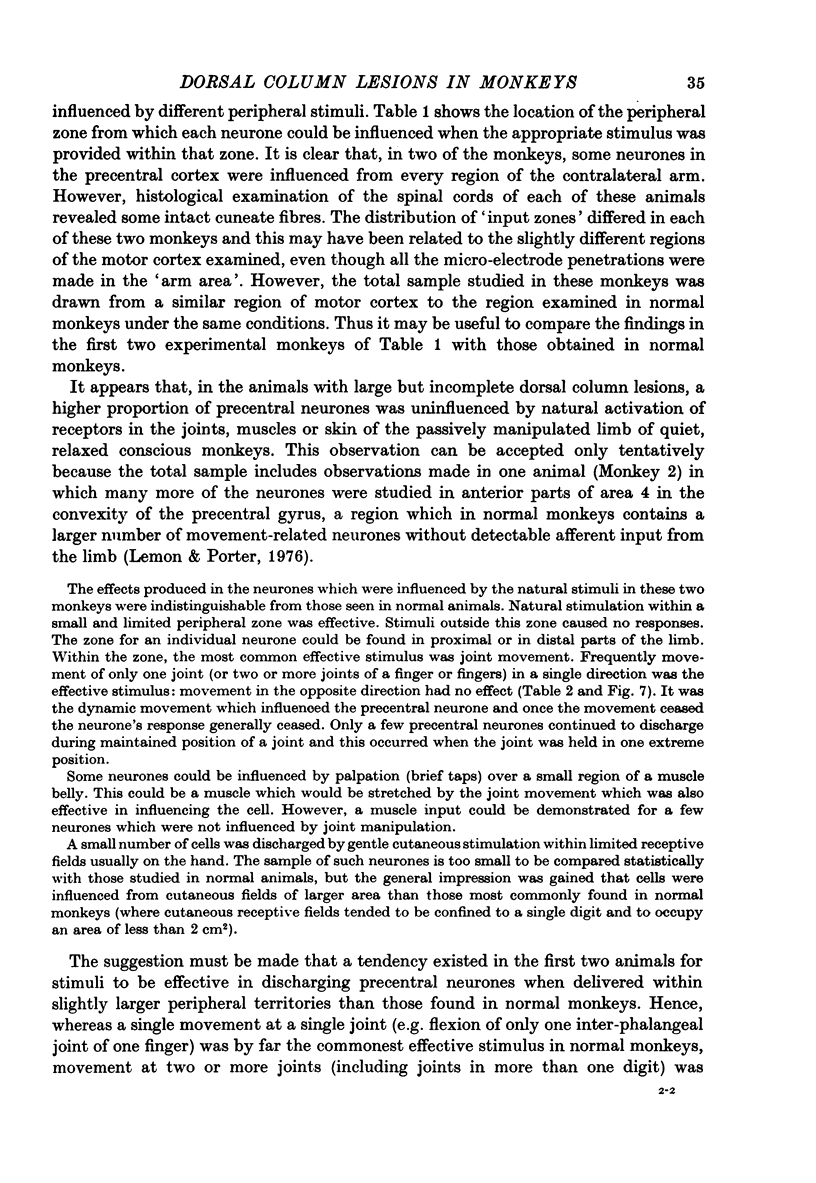


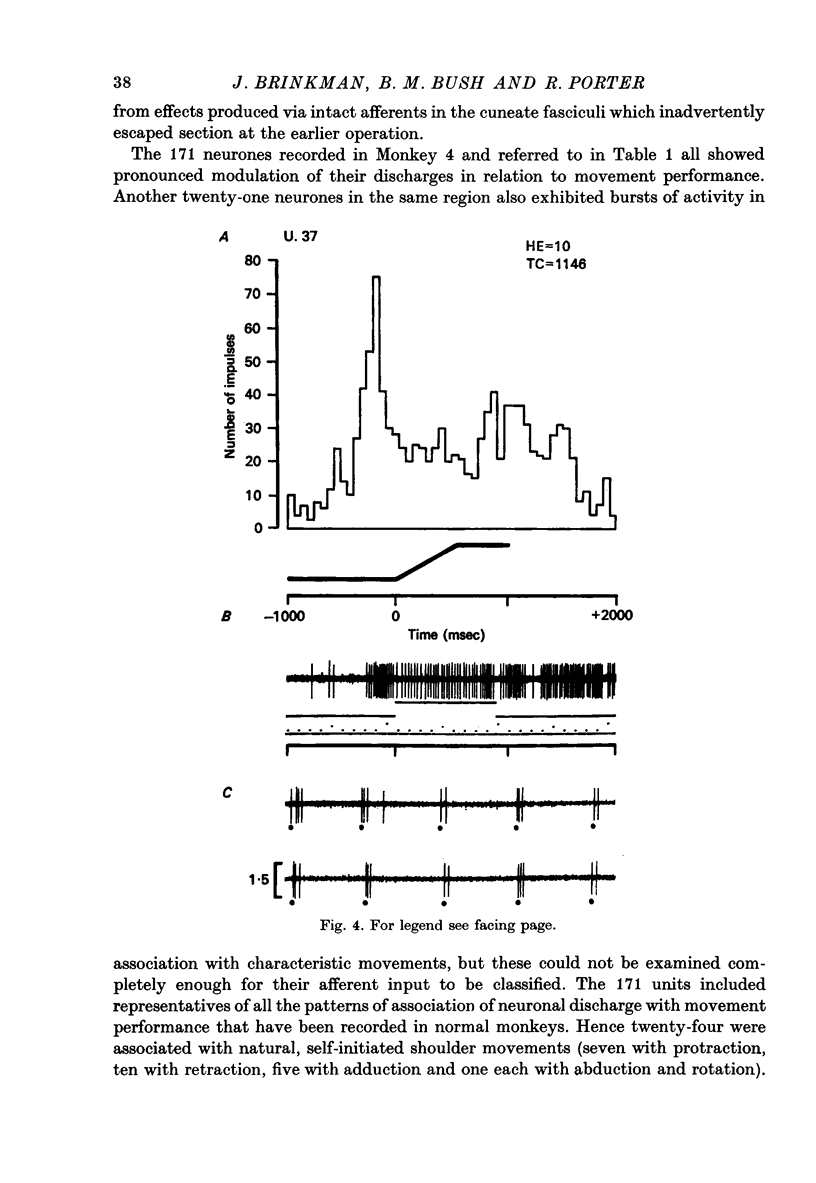
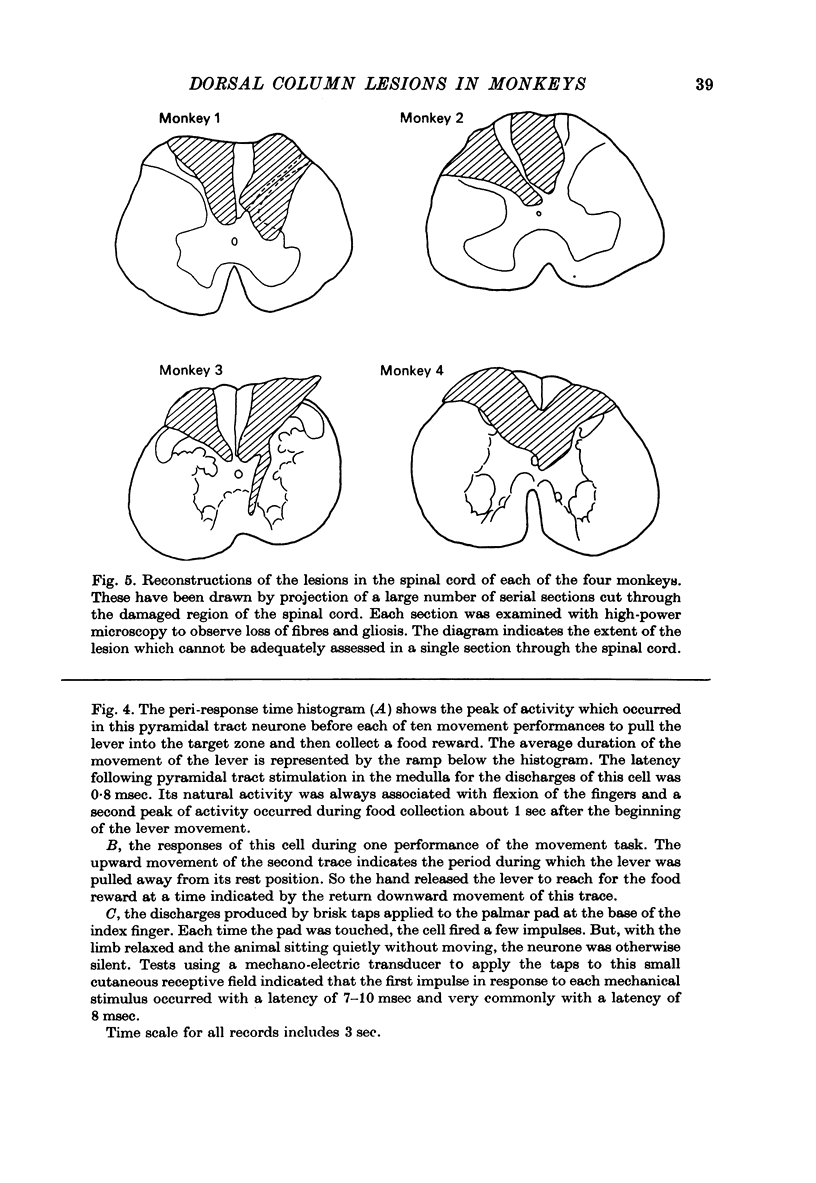
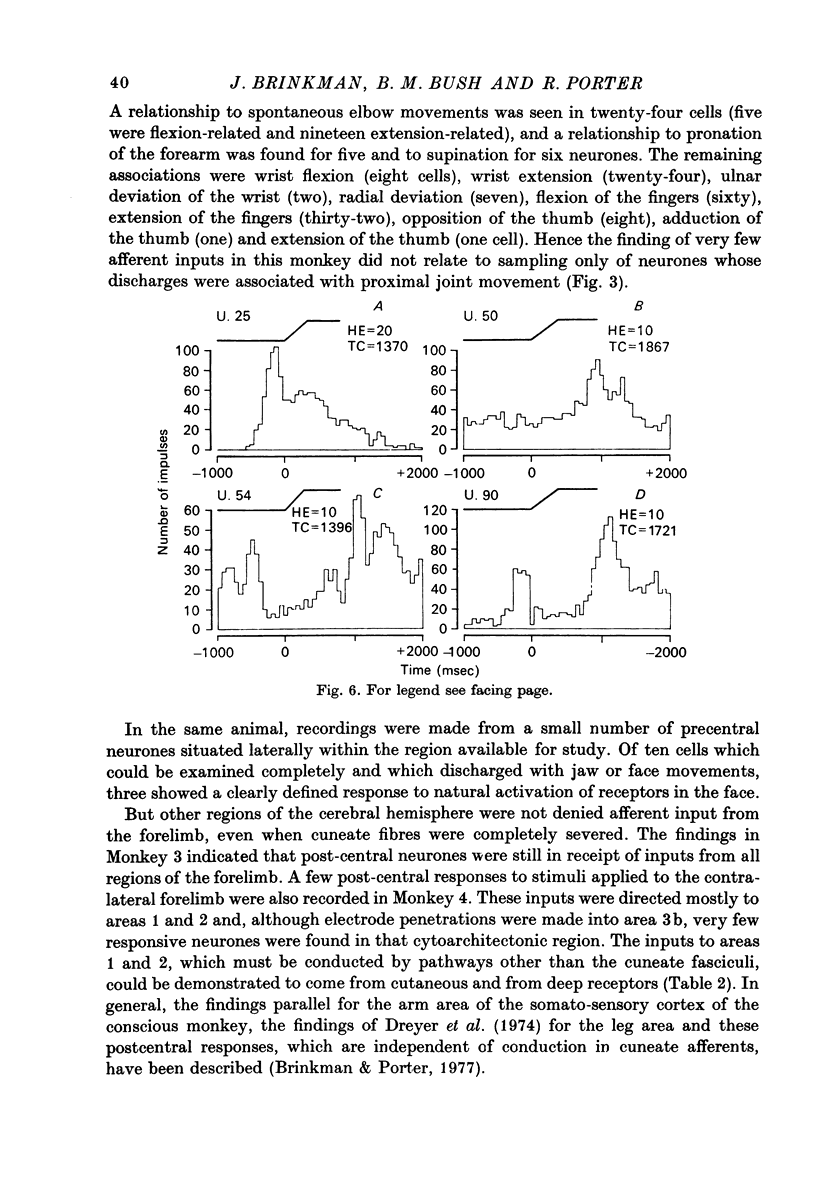
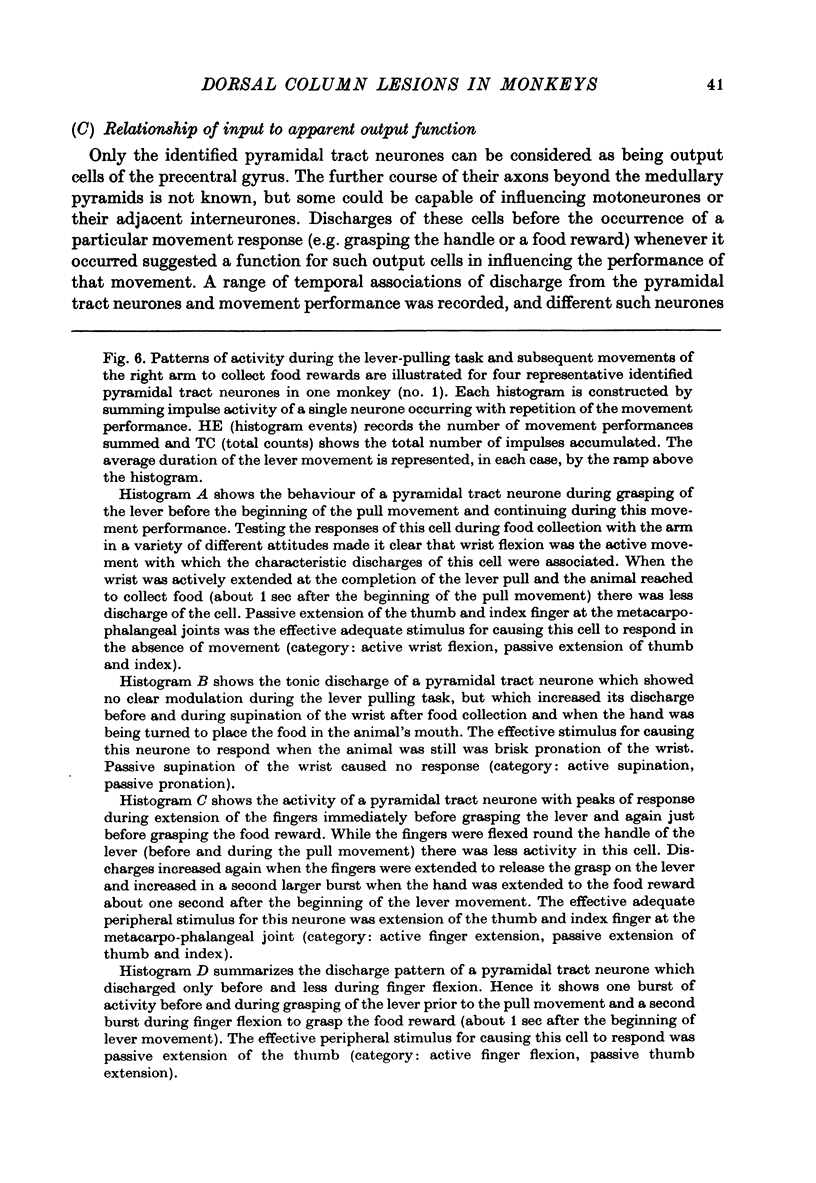
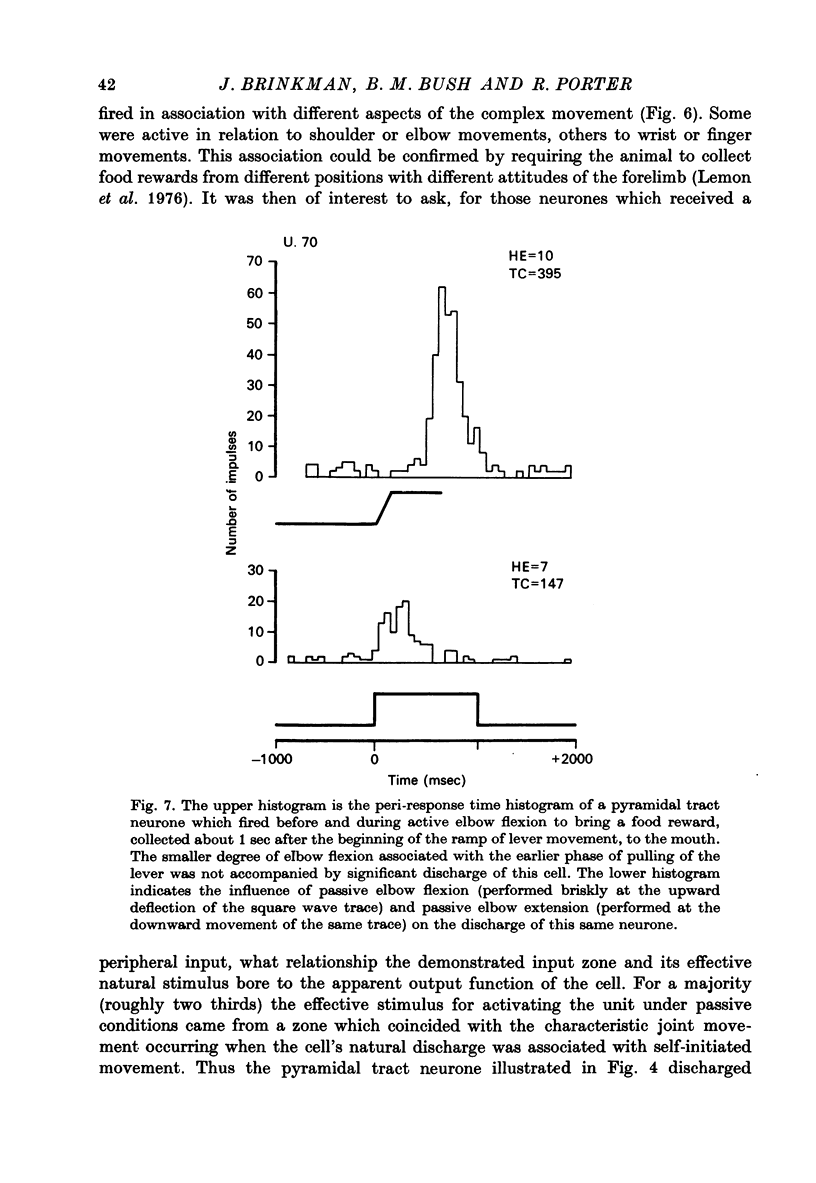

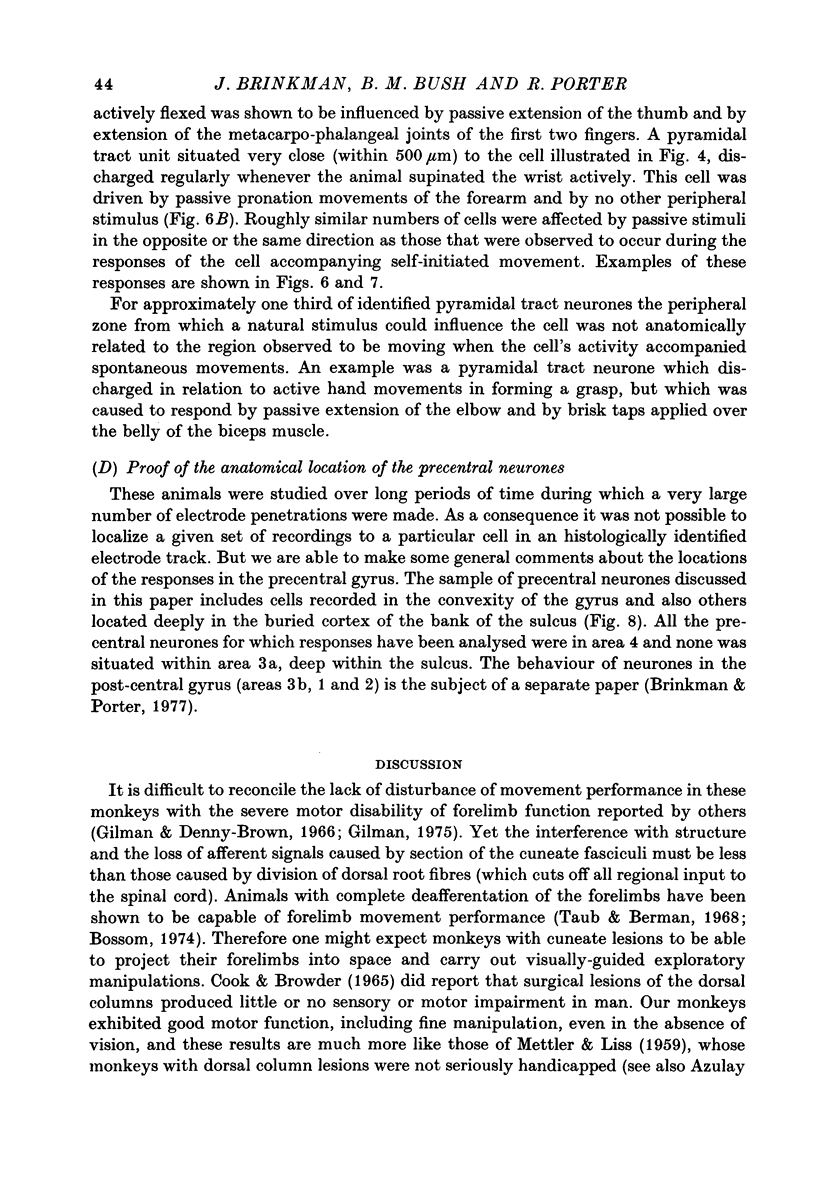

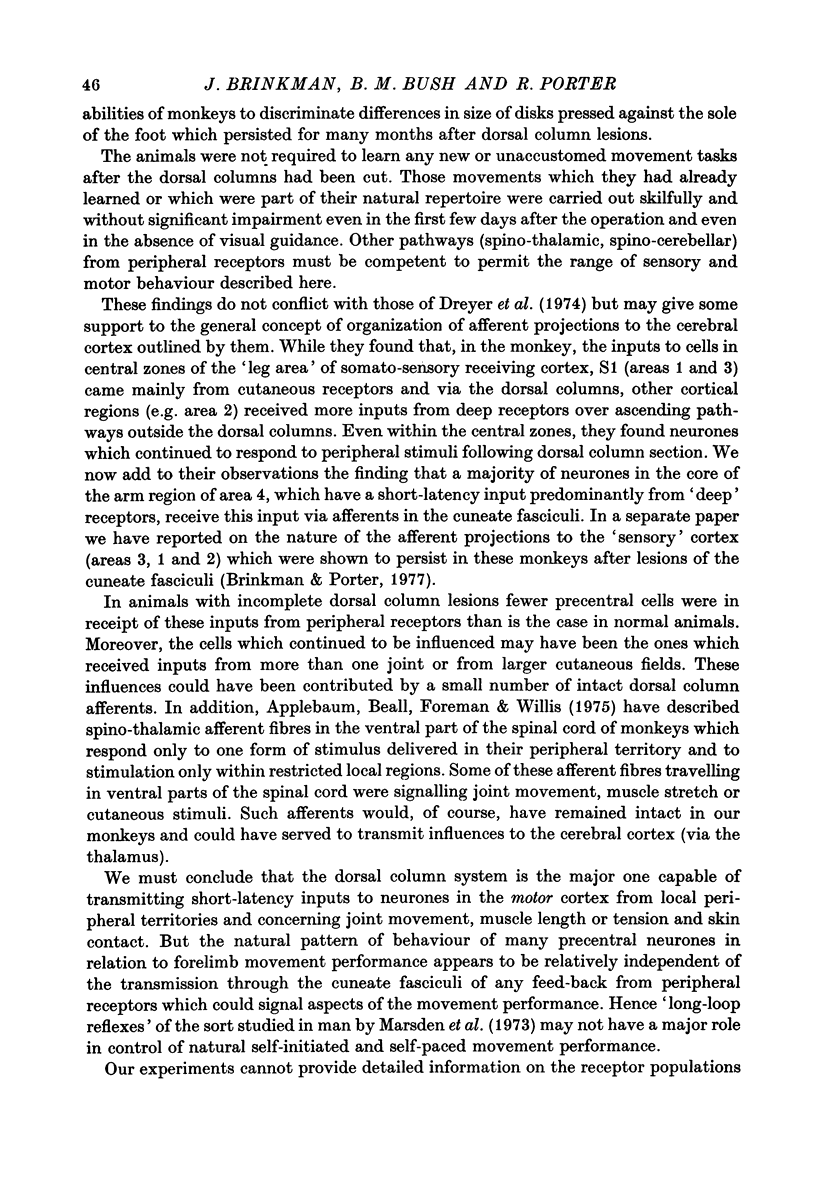
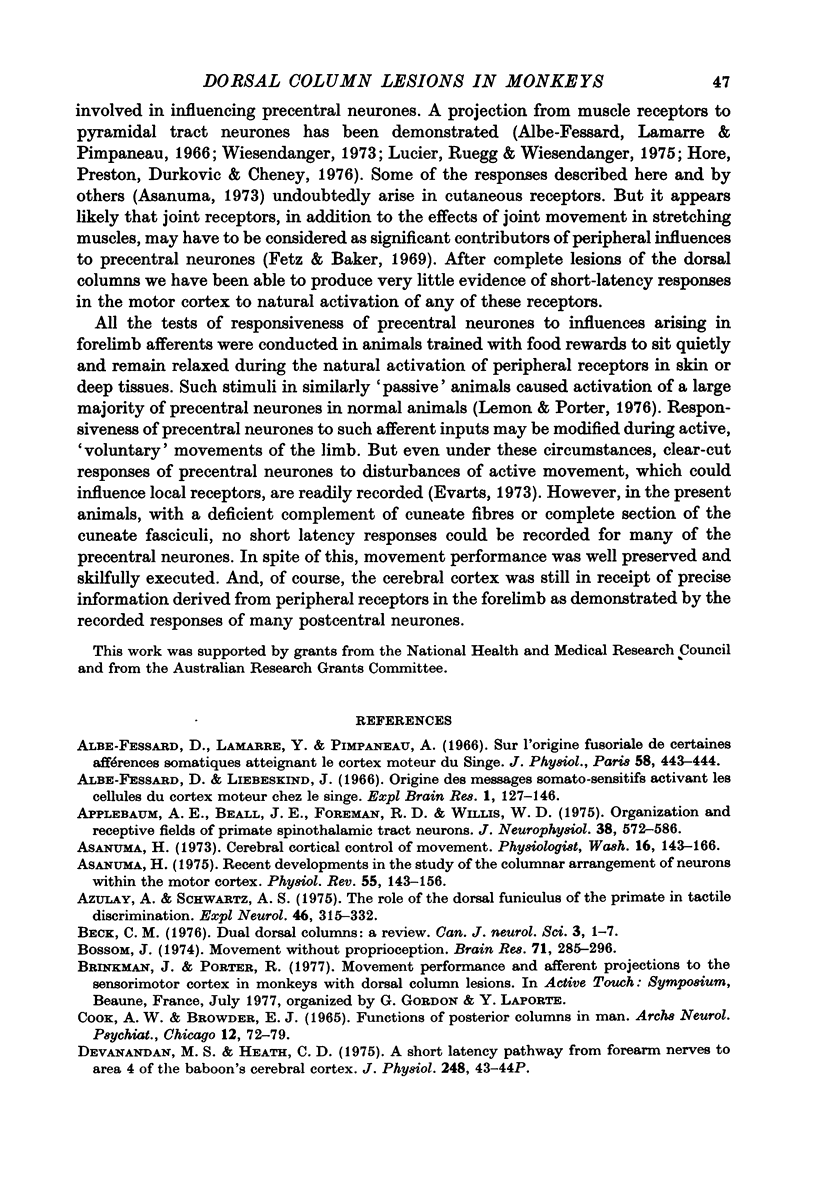

Selected References
These references are in PubMed. This may not be the complete list of references from this article.
- Albe-Fessard D., Liebeskind J. Origine des messages somato-sensitifs activant les cellules du cortex moteur chez le singe. Exp Brain Res. 1966;1(2):127–146. doi: 10.1007/BF00236866. [DOI] [PubMed] [Google Scholar]
- Applebaum A. E., Beall J. E., Foreman R. D., Willis W. D. Organization and receptive fields of primate spinothalamic tract neurons. J Neurophysiol. 1975 May;38(3):572–586. doi: 10.1152/jn.1975.38.3.572. [DOI] [PubMed] [Google Scholar]
- Asanuma H. Recent developments in the study of the columnar arrangement of neurons within the motor cortex. Physiol Rev. 1975 Apr;55(2):143–156. doi: 10.1152/physrev.1975.55.2.143. [DOI] [PubMed] [Google Scholar]
- Azulay A., Schwartz A. S. The role of the dorsal funiculus of the primate in tactile discrimination. Exp Neurol. 1975 Feb;46(2):315–332. doi: 10.1016/0014-4886(75)90138-7. [DOI] [PubMed] [Google Scholar]
- Beck C. H. Dual dorsal columns: a review. Can J Neurol Sci. 1976 Feb;3(1):1–7. doi: 10.1017/s0317167100025932. [DOI] [PubMed] [Google Scholar]
- COOK A. W., BROWDER E. J. FUNCTION OF POSTERIOR COLUMNS IN MAN. Arch Neurol. 1965 Jan;12:72–79. doi: 10.1001/archneur.1965.00460250076009. [DOI] [PubMed] [Google Scholar]
- Devanandan M. S., Heath P. D. Proceedings: A short latency pathway from forearm nerves to area 4 of the baboon's cerebral cortex. J Physiol. 1975 Jun;248(1):43P–44P. [PubMed] [Google Scholar]
- Dreyer D. A., Schneider R. J., Metz C. B., Whitsel B. L. Differential contributions of spinal pathways to body representation in postcentral gyrus of Macaca mulatta. J Neurophysiol. 1974 Jan;37(1):119–145. doi: 10.1152/jn.1974.37.1.119. [DOI] [PubMed] [Google Scholar]
- Evarts E. V. Motor cortex reflexes associated with learned movement. Science. 1973 Feb 2;179(4072):501–503. doi: 10.1126/science.179.4072.501. [DOI] [PubMed] [Google Scholar]
- Gilman S., Denny-Brown D. Disorders of movement and behaviour following dorsal column lesions. Brain. 1966 Sep;89(3):397–418. doi: 10.1093/brain/89.3.397. [DOI] [PubMed] [Google Scholar]
- Goldring S., Ratcheson R. Human motor cortex: sensory input data from single neuron recordings. Science. 1972 Mar 31;175(4029):1493–1495. doi: 10.1126/science.175.4029.1493. [DOI] [PubMed] [Google Scholar]
- Hore J., Preston J. B., Cheney P. D. Responses of cortical neurons (areas 3a and 4) to ramp stretch of hindlimb muscles in the baboon. J Neurophysiol. 1976 May;39(3):484–500. doi: 10.1152/jn.1976.39.3.484. [DOI] [PubMed] [Google Scholar]
- Lemon R. N., Hanby J. A., Porter R. Relationship between the activity of precentral neurones during active and passive movements in conscious monkeys. Proc R Soc Lond B Biol Sci. 1976 Oct 29;194(1116):341–373. doi: 10.1098/rspb.1976.0083. [DOI] [PubMed] [Google Scholar]
- Lemon R. N., Porter R. Afferent input to movement-related precentral neurones in conscious monkeys. Proc R Soc Lond B Biol Sci. 1976 Oct 29;194(1116):313–339. doi: 10.1098/rspb.1976.0082. [DOI] [PubMed] [Google Scholar]
- Lewis M. M., Porter R. Pyramidal tract discharge in relation to movement performance in monkeys with partial anaesthesia of the movind hand. Brain Res. 1974 May 17;71(2-3):345–351. doi: 10.1016/0006-8993(74)90977-9. [DOI] [PubMed] [Google Scholar]
- Lucier G. E., Rüegg D. C., Wiesendanger M. Responses of neurones in motor cortex and in area 3A to controlled stretches of forelimb muscles in cebus monkeys. J Physiol. 1975 Oct;251(3):833–853. doi: 10.1113/jphysiol.1975.sp011125. [DOI] [PMC free article] [PubMed] [Google Scholar]
- Marsden C. D., Merton P. A., Morton H. B. Is the human stretch reflex cortical rather than spinal? Lancet. 1973 Apr 7;1(7806):759–761. doi: 10.1016/s0140-6736(73)92141-7. [DOI] [PubMed] [Google Scholar]
- Phillips C. G., Powell T. P., Wiesendanger M. Projection from low-threshold muscle afferents of hand and forearm to area 3a of baboon's cortex. J Physiol. 1971 Sep;217(2):419–446. doi: 10.1113/jphysiol.1971.sp009579. [DOI] [PMC free article] [PubMed] [Google Scholar]
- Porter R. Influences of movement detectors on pyramidal tract neurons in primates. Annu Rev Physiol. 1976;38:121–137. doi: 10.1146/annurev.ph.38.030176.001005. [DOI] [PubMed] [Google Scholar]
- Porter R., Lewis M. M., Linklater G. F. A headpiece for recording discharges of neurons in unrestrained monkeys. Electroencephalogr Clin Neurophysiol. 1971 Jan;30(1):91–93. doi: 10.1016/0013-4694(71)90210-0. [DOI] [PubMed] [Google Scholar]
- Rosén I., Asanuma H. Peripheral afferent inputs to the forelimb area of the monkey motor cortex: input-output relations. Exp Brain Res. 1972;14(3):257–273. doi: 10.1007/BF00816162. [DOI] [PubMed] [Google Scholar]
- Vierck C. J., Jr Alterations of spatio-tactile discrimination after lesions of primate spinal cord. Brain Res. 1973 Aug 17;58(1):69–79. doi: 10.1016/0006-8993(73)90824-x. [DOI] [PubMed] [Google Scholar]
- Wiesendanger M. Input from muscle and cutaneous nerves of the hand and forearm to neurones of the precentral gyrus of baboons and monkeys. J Physiol. 1973 Jan;228(1):203–219. doi: 10.1113/jphysiol.1973.sp010082. [DOI] [PMC free article] [PubMed] [Google Scholar]


